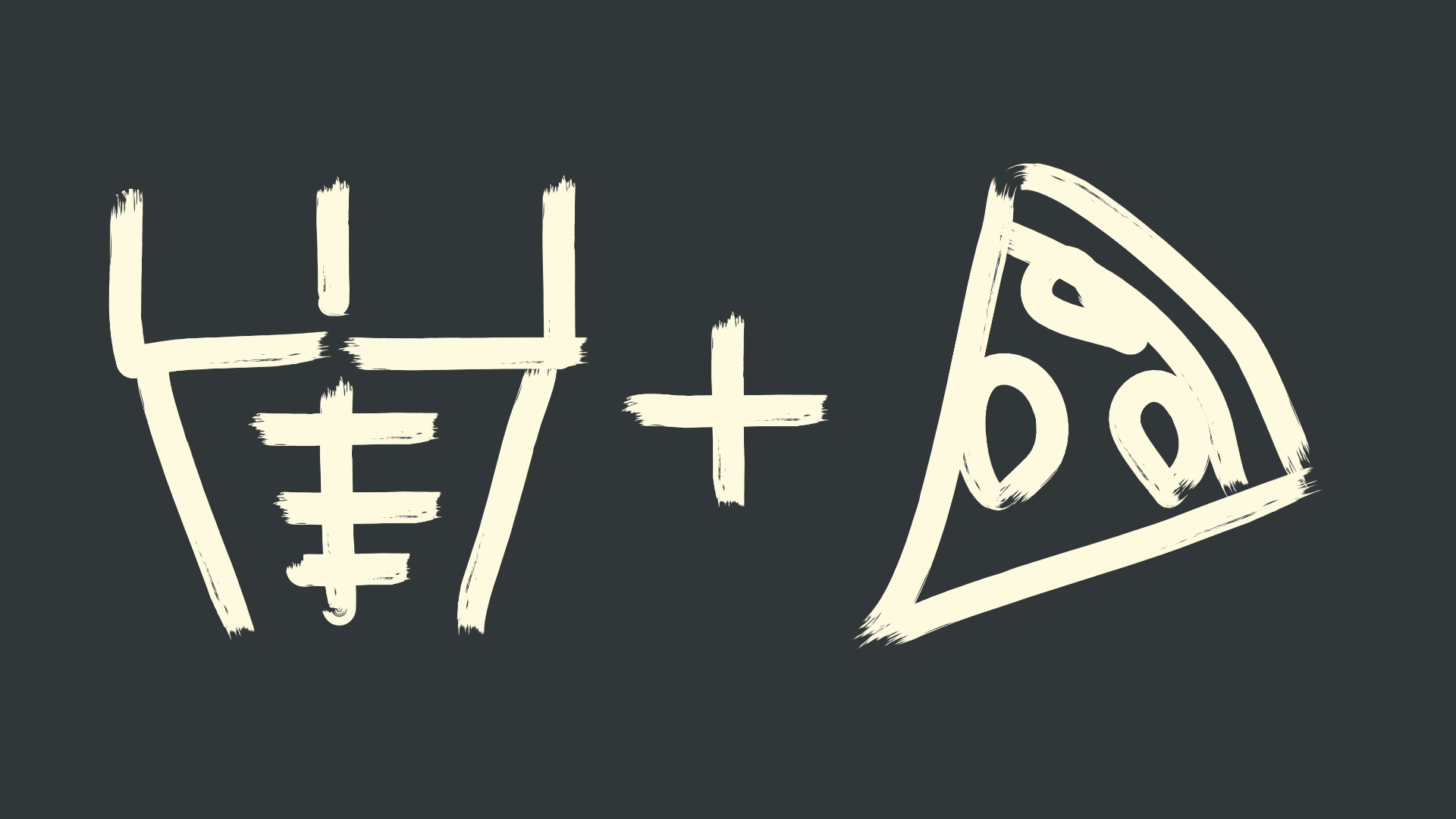When people first decide they’re going to lose some body fat, they often try to go all-or-nothing in their approach.
Which makes sense—it’s simple.
“I’ll just cut out everything (carbs, fat, alcohol, fun), do heaps of cardio, and get shredded, then I’m sweet.”
Unfortunately, there’s a couple of key flaws to this approach.

Why All-Or-Nothing Doesn’t Work For Fat Loss
First, you cannot sprint your way to really low levels of body fat.
Going super low calories might intuitively sound like a straightforward way to hit a deficit.
“Just don’t eat.”
Simple. Not much thought required there.
But here’s the thing that people who have never gotten lean don’t understand: It does not matter how hard you go, there is a physiological limit to the pace you can sustainably lose fat (without simultaneously losing muscle, running your hormones into the ground, and feeling terrible).
This is annoying. Yes. Because it means you can’t just go all in and get it done before you even have a chance to think.
Instead, you have to know how much energy you’re consuming on a daily basis, get that amount just right, and sustain it for long enough (one or more cycles of 4-12 weeks) to get to your goal.
It would be nice if you could simply eat nothing for 2 weeks, lose 5kg of fat, and be done. But alas, that’s just not how the human body works.
The second issue with the all-or-nothing approach comes from cutting out everything that you enjoy from your life.
Don’t eat carbs, give up nice food, stop drinking alcohol, sacrifice time to do cardio…
This will all likely put you in a deficit. At least initially.
But how long are you going to keep that up?
Physiological limits aside, you can’t ignore the fact that you’re a human being. Which means, ultimately, you’re going to do what you want to do. You might keep up your crash-diet plan for a week. Maybe even two weeks. But eventually you’re going to realise that your life is more important than your ambiguous fat-loss goal (which it is!) and throw in the towel.
So the only way, behaviourally speaking, that you can really get lean, is by making the fat loss process one that you WANT to do, on a daily basis. That means hitting your deficit while eating your favourite food, drinking when you want to, and not needing to do a bunch of extra exercise to hit your daily targets.
This sort of plan might take more intentional planning than just “quit carbs and run every day until I’m lean”. But, if you can do the above two things—hit a sustained, moderate calorie deficit, while keeping your diet and lifestyle much the same as it is now—the upside is twofold:
1. The process isn’t any less fun than when you’re not losing fat
- You still eat the food you like (and it tastes better because you actually need it)
- You still live your life as normal (drink, eat out, enjoy meals with friends, etc)
- You still feel happy and energetic (rather than crashing from severe dieting)
2. (And here’s the clincher) You actually get a result.
Because you sustain the right deficit for long enough to lose the fat you wanted to lose in the first place.
And the good news is, this process can be just as simple to execute as the alternative. It just take a little up-front planning, after which you can lock into a routine that takes very little thought day-to-day to implement.
When I finally figured out that all that was standing between me and getting really lean (provided I kept training and building muscle each year—this is essential) was hitting a net moderate calorie deficit for enough weeks, I realised that how I hit that deficit did not matter. So if I wanted to be smart about things, my goal should actually be to make that process as easy and fun as possible, so that I would eliminate all reason not to do it. The moment I did that is when shit really got exciting. It’s also when getting and staying lean ceased to be a problem for me for the rest of my life.
The ONLY way you will get to sub-10% body fat and stay there…
is if you go at the right pace, and make that process easy and enjoyable.
That way, you will actually sustain it for enough weeks to reach your goal.
How I Got Sub-10% Body Fat Eating What I Wanted
Prerequisite: Strength train & hit a protein target
Before doing any of the below, the first thing you must be doing if you want to get lean and look good is building up your strength, by training and hitting a protein target. This will mean you actually have muscle mass to reveal at the end, and can maintain a healthy bodyweight with low levels of body fat. Doing these two things is also essential during your fat loss phase, as this is what stimulates muscle growth, so in a deficit will tell your body to prioritise losing fat, rather than burning muscle mass for fuel as well. If you don’t do this properly, you’re just going to get skinnier, not leaner. So if you haven’t started training and hitting protein target yet, get that sorted first, then come back.
Step 1. Get your numbers right
The ideal deficit
The most crucial step to getting lean is to find (through trial and error) the calorie target that allows you to lose fat at the right pace—your ideal calorie deficit. Basically, you want:
a) to be losing weight at a reasonable rate (~0.5kg a week), but
b) feeling good (not constantly hungry, brain-fogged and irritable).
This purely comes down to the amount of energy you’re eating on average each week. Your goal is to find the sweet spot, then lock in.
- To get a starting estimate of your maintenance calories, multiply your bodyweight in kg x 33.
- To figure out your calorie target for fat loss, take your maintenance calories and subtract 400-500 calories off (or 20%)—this puts you in a deficit.
e.g.
If I’m 75kg, I’d estimate maintenance at 75 x 33 = ~2500 calories/day
So I might start with a 400-calorie deficit, aiming for 2100 calories/day, to lose fat.
This estimate gives you a start, but I’ve needed to iterate my way to the number that works best for me by testing a week or two at a time, seeing how things go, and adjusting up or down accordingly. Also bear in mind that your maintenance calories will increase over the years as you gain muscle (the more muscle mass on your frame, the higher your resting metabolic rate). So figure out what works for now, but be ready for that number to be higher next time you go to lose some fat.
Have an end date
You never want to be in an indefinite calorie deficit—it becomes unproductive quickly. The maximum length I aim for before going back to maintenance calories (normal eating) is 12 weeks. If you’ve got heaps of fat to lose (i.e., more than 6kg), run it for 12 weeks, then take a break. Let yourself reset and get comfortable at your new body fat. Then after a couple of weeks you can run another cut. It shouldn’t take more than 2 of these to get to your goal (unless you have more than 12kg of fat to lose). After that you can use 12 weeks or less per year to stay lean and keep getting leaner as you continue to grow stronger and build muscle.
Decide on a number of weeks you think you want to lose fat for (between 4 and 12) and put the end date in your calendar.
Step 2. Make that deficit as easy and fun as possible to hit
Now you have all the essentials of a plan to take you to your goal: a calorie target, and length of time. All that’s left is to execute. Which means making hitting that target as easy and fun as you can.
Get enough protein, but don’t overdo it
Before starting a fat loss phase you should be already hitting a protein target. The point I want to make now is that protein is very useful to a point, after which more is not better. Hitting around 1.8g/kg bodyweight is plenty. Once you’ve hit that target, you will receive more benefit by getting the rest of your calories from carbs and fats.
e.g.
If I’m 75kg, I’d aim for 75 x 1.8 = ~140g protein/day.
That 140g protein can come from simply 700g lean meat (raw weight).
The rest of my food can (and should) be from non-protein sources—carbs and fats will be more beneficial for my energy levels, appetite and wellbeing once this target is hit.
Eat heaps of satiating, tasty food
Don’t skimp on your carbs, you need them!
Once you’ve hit your protein, make up the rest of your calories from foods you like—your meals should be something you look forward to. There are no limits to what you can have as long as you’re hitting your numbers (calories and protein). So get a balance (i.e., protein, carbs, fats, vegetables), choose things you would eat normally anyway, and make sure you save room for dessert!
Keep it simple
I eat the same stuff every day. You don’t get abs as a reward for creativity. You get them from hitting your deficit. We want to make that as easy as possible, so the less thinking required, the better.
I suggest making a daily plan you love and running it on repeat. Doing this makes it easy to adjust if things aren’t working, too.
Get away with as much as you can
Within the constraints of your calorie target, do what you want! Try to enjoy yourself as much as possible: Do all the things you’d do if you weren’t cutting (drink alcohol, eat meals out, eat dessert, make your favourite meals, etc), just get your protein in and make it all fit your calorie target, and you’re sweet.
If you have weekends where you want to splurge, use your deficit buffer and just take a day off. Have an extra 400-500 calories that you know you can consume without delaying your cut for more than 24 hours. If you use it, it’ll likely make the following days easier.
That’s it for now. The point I want you to realise is that losing fat takes time (although is relatively quick in the scheme of things), and the only way you’re going to keep at it for long enough to get the results you want is if you make the process one that you genuinely enjoy, from start to finish. Hopefully these strategies give you an idea of how you can go about doing that.
